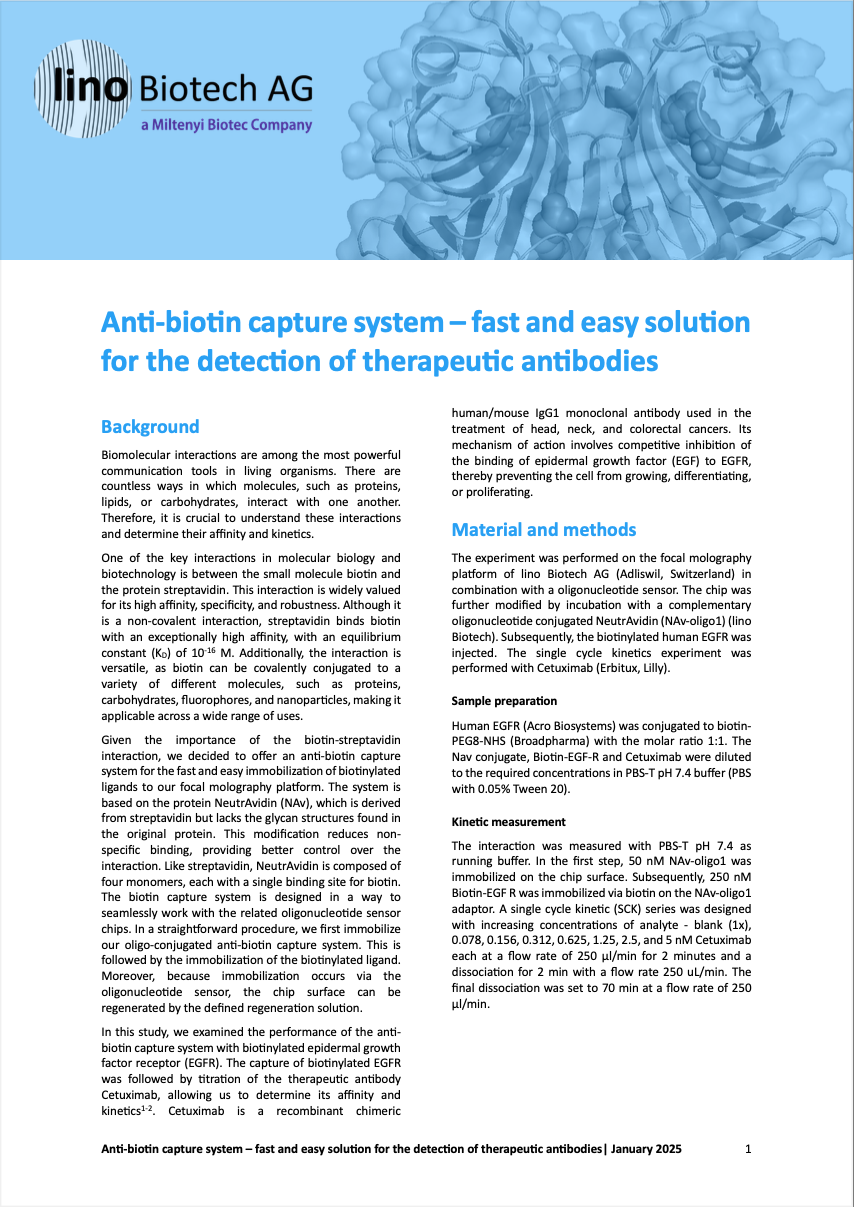Anti-biotin capture system – fast and easy solution for the immobilization and characterization of your biotinylated ligands
Biomolecular interactions are among the most powerful communication tools in living organisms. There are countless ways in which molecules, such as proteins, lipids, or carbohydrates, interact with one another. Therefore, it is crucial to understand these interactions and determine their affinity and kinetics.
One of the key interactions in molecular biology and biotechnology is between the small molecule biotin and the protein streptavidin. This interaction is widely valued for its high affinity, specificity, and robustness. Although it is a non-covalent interaction, streptavidin binds biotin with an exceptionally high affinity, with an equilibrium constant (KD) of 10-16 M. Additionally, the interaction is versatile, as biotin can be covalently conjugated to a variety of different molecules, such as proteins, carbohydrates, fluorophores, and nanoparticles, making it applicable across a wide range of uses.
Given the importance of the biotin-streptavidin interaction, we decided to offer an anti-biotin capture system for the fast and easy immobilization of biotinylated ligands to our focal molography platform. The system is based on the protein NeutrAvidin (NAv), which is derived from streptavidin but lacks the glycan structures found in the original protein. This modification reduces non-specific binding, providing better control over the interaction. Like streptavidin, NeutrAvidin is composed of four monomers, each with a single binding site for biotin. The biotin capture system is designed in a way to seamlessly work with the related oligonucleotide sensor chips. In a straightforward procedure, we first immobilize our oligo-conjugated anti-biotin capture system. This is followed by the immobilization of the biotinylated ligand. Moreover, because immobilization occurs via the oligonucleotide sensor, the chip surface can be regenerated by the defined regeneration solution.
In this study, we examined the performance of the anti-biotin capture system with biotinylated epidermal growth factor receptor (EGFR). The capture of biotinylated EGFR was followed by titration of the therapeutic antibody Cetuximab, allowing us to determine its affinity and kinetics1-2. Cetuximab is a recombinant chimeric human/mouse IgG1 monoclonal antibody used in the treatment of head, neck, and colorectal cancers. Its mechanism of action involves competitive inhibition of the binding of epidermal growth factor (EGF) to EGFR, thereby preventing the cell from growing, differentiating, or proliferating.

